Documents
Guide for labeling document (PDF) data.
When you attach a document dataset to a project, Labelbox will automatically adjust the editor interface for document labeling.

Import document data
To learn how to import documents to Labelbox, visit the documentation on importing document data.
Data row size limit
To view the maximum size allowed for a data row, visit our limits page.
Supported annotation types
Below are the annotation types you may include in your ontology for labeling document data. Classification-type annotations can be applied globally or nested within a bounding box or entity annotation.
| Import annotation | Export annotation | |
|---|---|---|
| Bounding box | See payload | See payload |
| Entity | See payload | See payload |
| Relationship | See payload | See payload |
| Radio classification | See payload | See payload |
| Checklist classification | See payload | See payload |
| Free-form text classification | See payload | See payload |
All PDF documents support bounding box annotations. To create other annotations, PDF documents must have text boxes before you upload them to Catalog. For best results, verify text layers before uploading PDFs.
Bounding box
To create a bounding box, use your cursor to create the shape around a character, word(s), or section in the document. To reposition the bounding box on the document, simply click + hold, then use your mouse or trackpad to reposition the annotation on the document. You can also click + drag the corners to resize the bounding box.
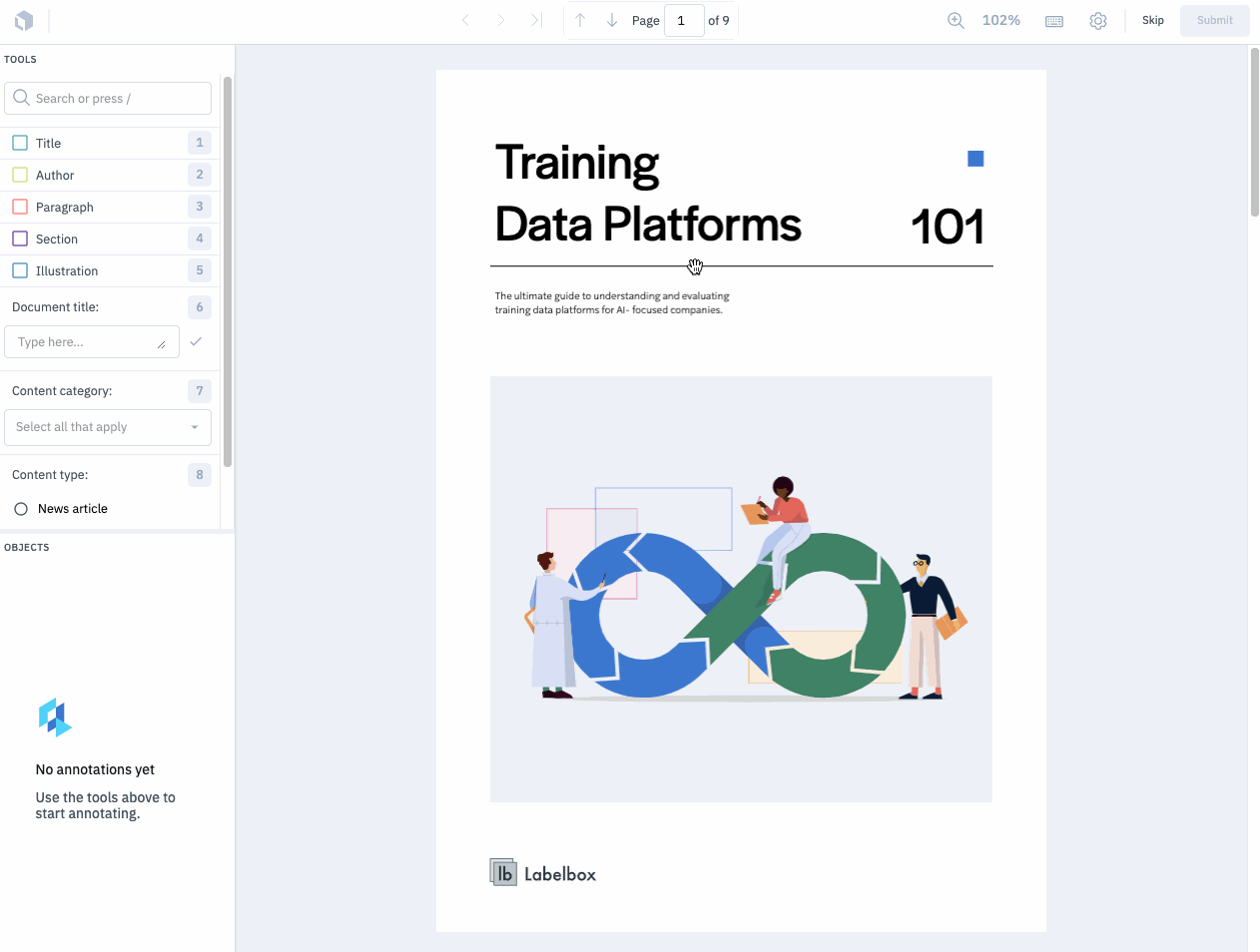
Entity
To create an entity annotation, click the desired starting character and drag to select a sequence of characters in the text. Characters are not restricted to a single class; entity annotations may overlap completely or partially. Entities may also span multiple pages. To edit an entity's class, right-click the entity and select Change class.
Shortcut: In the Tools panel, you will see a numerical hotkey next to the name of the annotation. Use the specified number hotkey (e.g., 1, 2, 3) to activate the entity tool.
To create another entity, press the number hotkey again to activate the tool, then create another entity. Once all entities have been created, press E to submit your label.
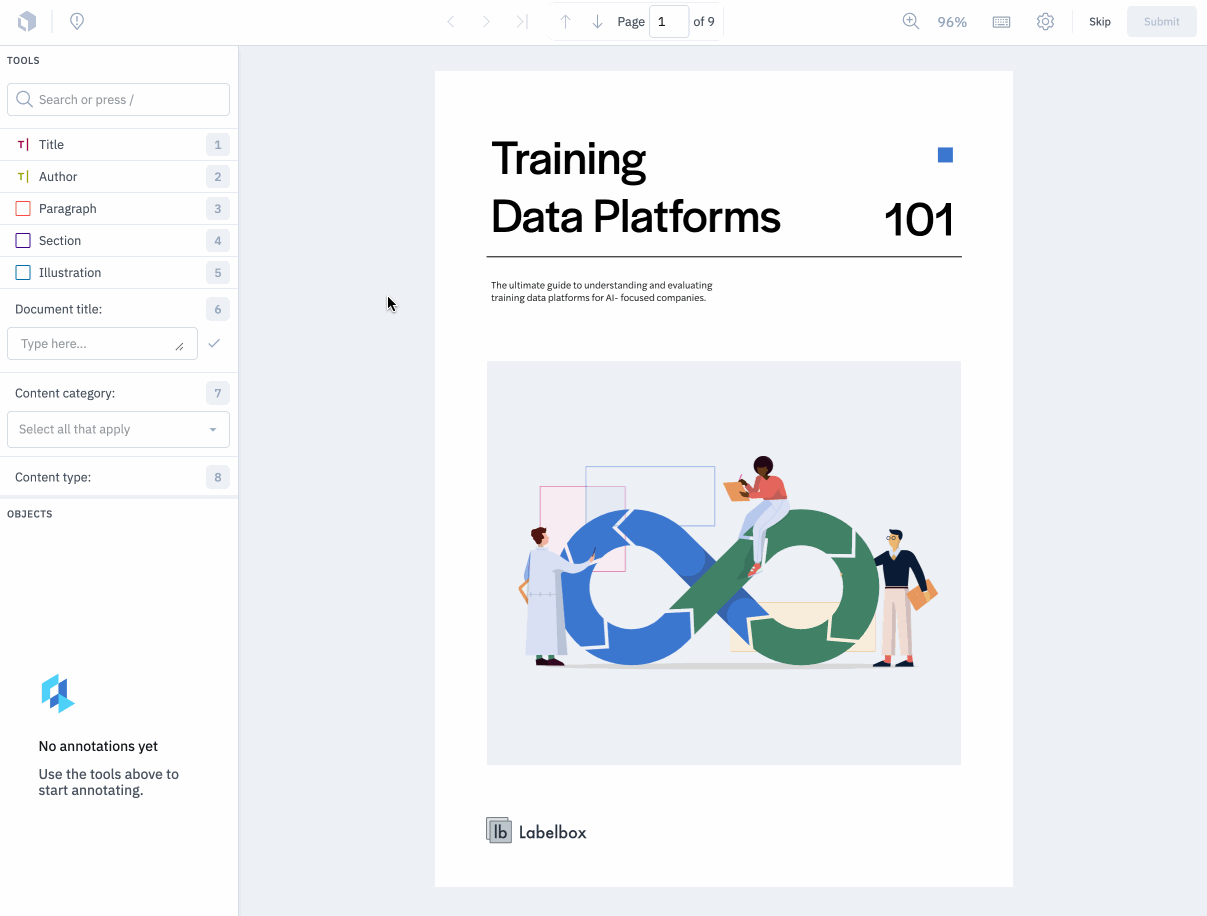
Token selection
We also support tokenization, so you can create and highlight entities at both word and character levels, which is determined by the data in your JSON upload.
Clicking on a specific word will highlight the entire word. This is helpful when labeling text, as it can be easy to accidentally miss certain characters or words when highlighting.
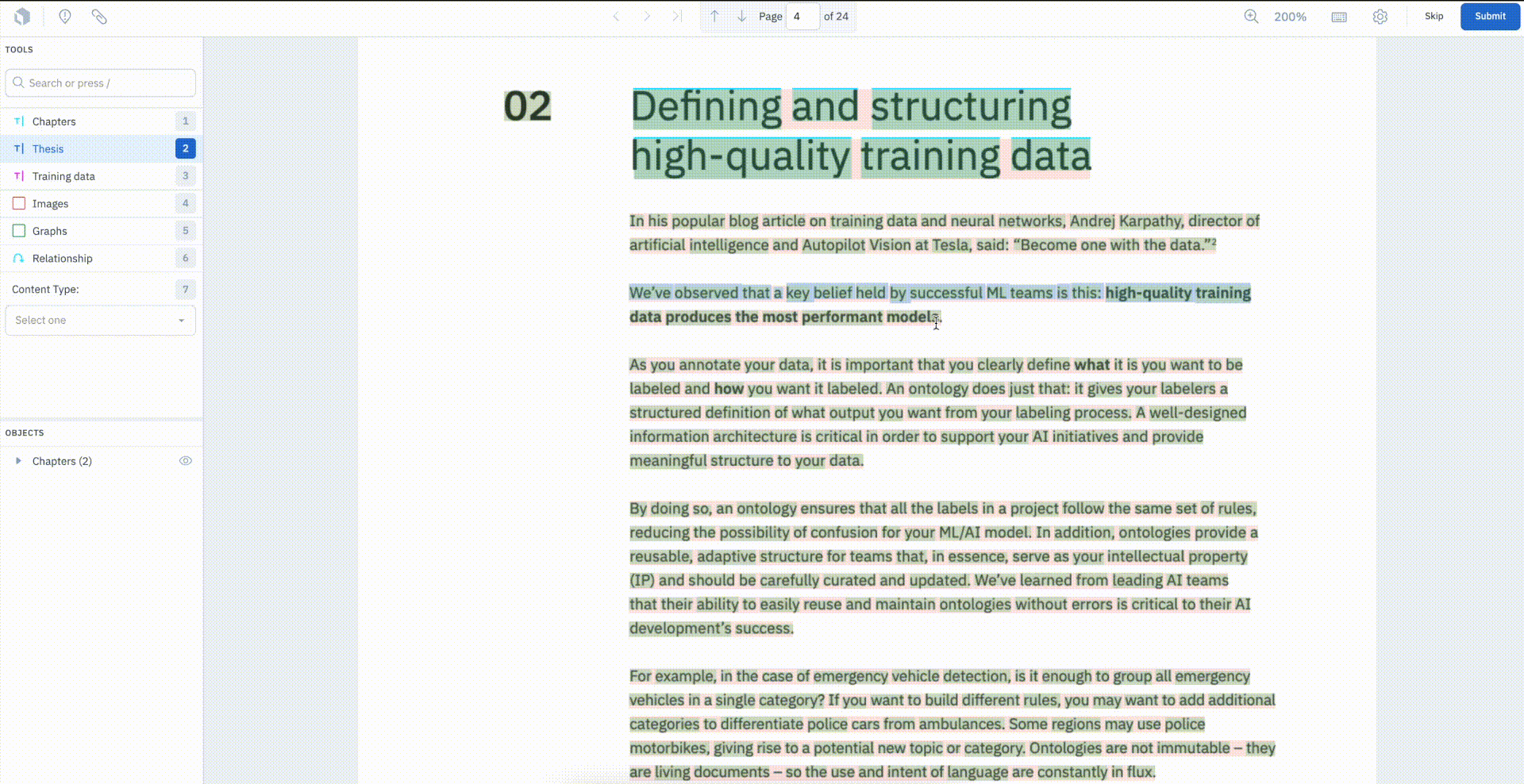
Relationships
To create a relationship between annotations, select a relationship tool and hover over the source annotation of the relationship to reveal the annotation's anchor points. Click an anchor point to create the starting point of the relationship, then bring your mouse over to the annotation you want to relate it to, hovering over it to reveal its anchor points. Finally, click one of the anchor points to complete the relationship.
Right-click a relationship to change its direction, make it bi-directional, or delete it altogether.
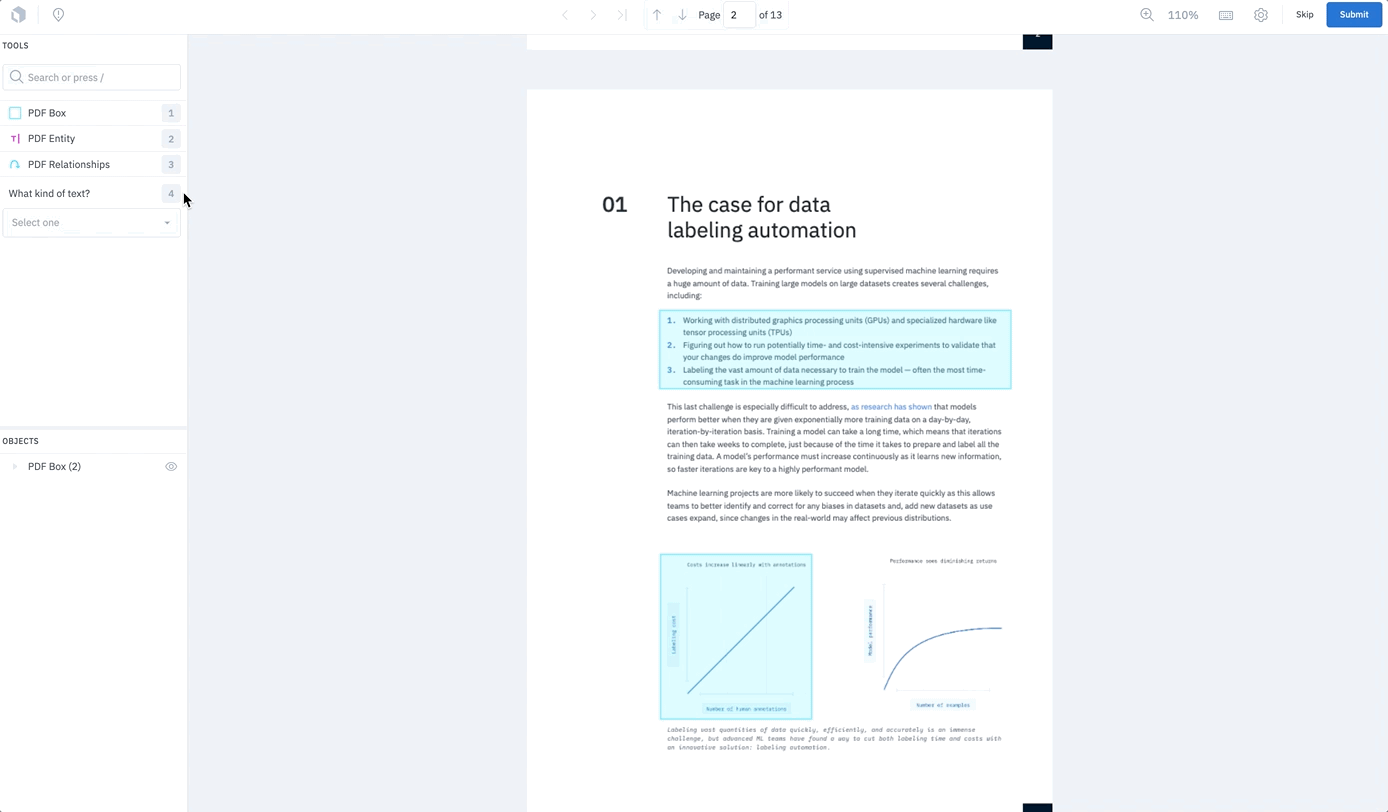
Relationships for annotations across pages
If you want to create an annotation relationship for annotations that exist on different pages, you will need to follow a slightly different workflow:
- Select the relationship tool.
- Go to the annotation where you want to start the relationship, right-click, and click Select relationship start.
- Scroll to your destination annotation, right-click, and click Select relationship end.
After you have selected both the starting and end annotation of the relationship, your relationship will be established.

Radio classification
Create a radio classification by activating the classification question and inputting the answer value. In the below example, press 8, k, and esc to complete the radio classification.
Once all classifications have been completed, press e to submit your label.
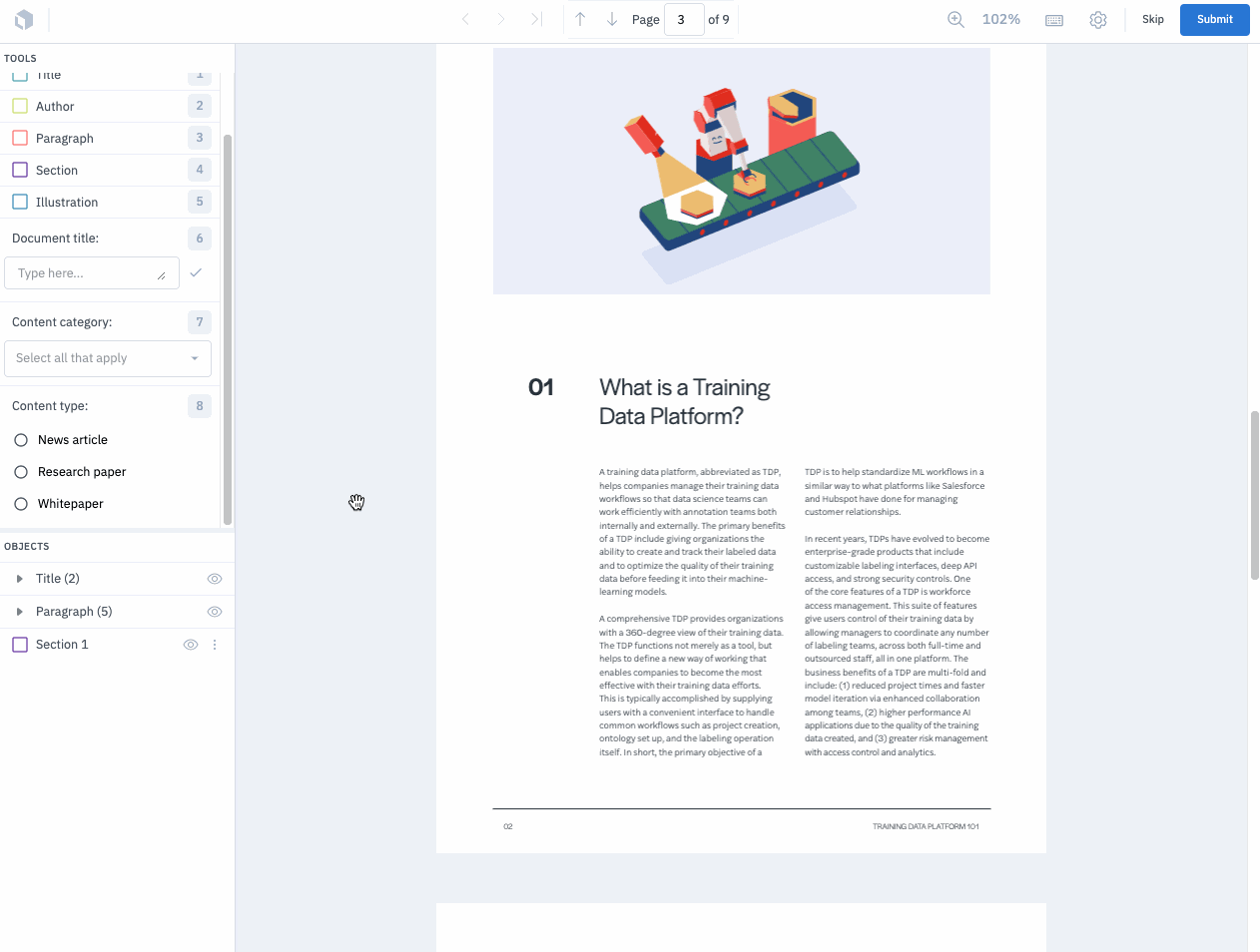
Checklist classification
Create a checklist classification by activating the classification question and inputting the answer value(s). In the below example, pressing 7 and pressing Down + Enter on the answer values completes the checklist classification.
Once all classifications have been completed, press e to submit your label.
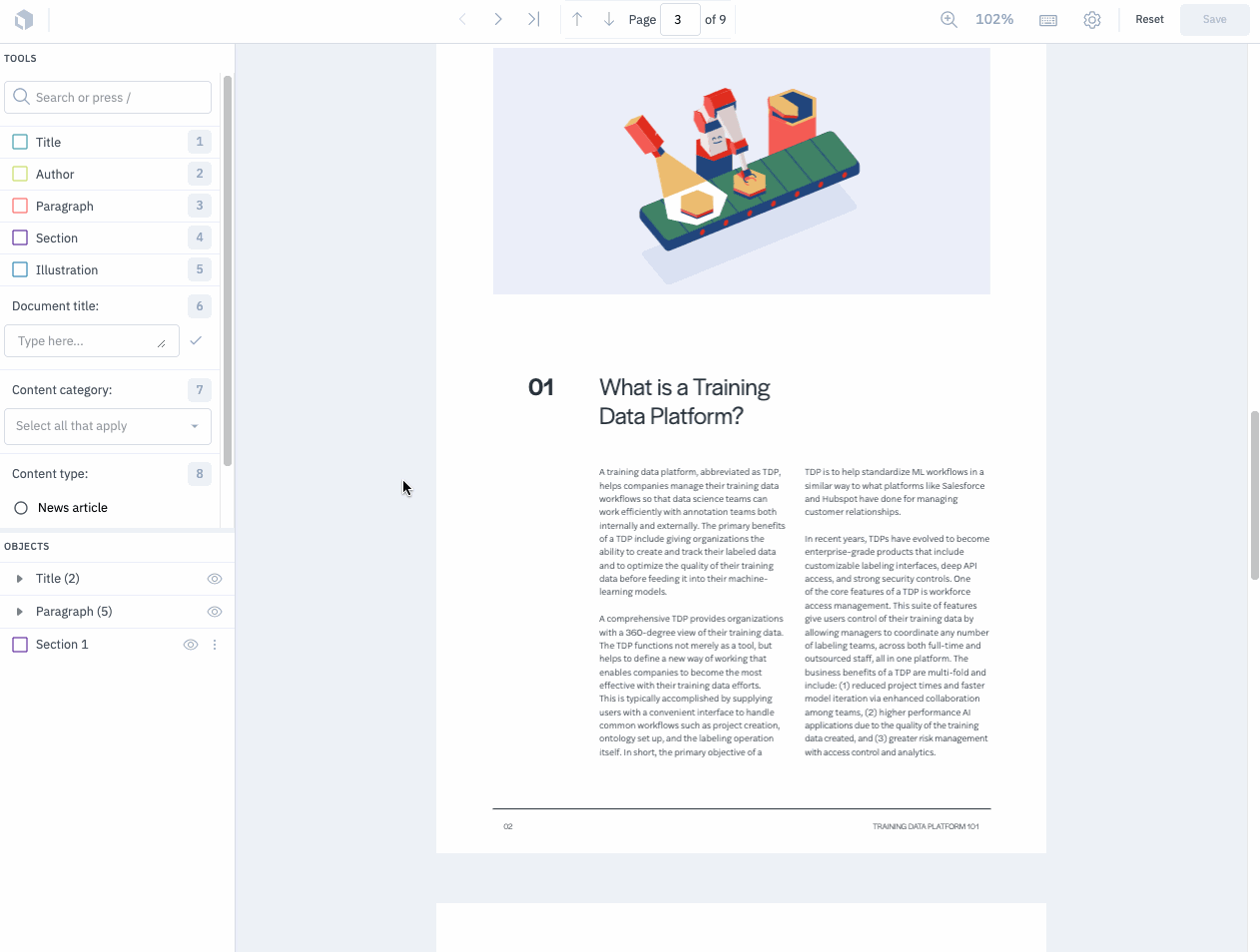
Free text classification
Create a free text classification by activating the classification question and inputting the answer value. In the below example, pressing 6, typing the answer value, and pressing Enter completes the free text classification.
Once all classifications have been completed, press e to submit your label.
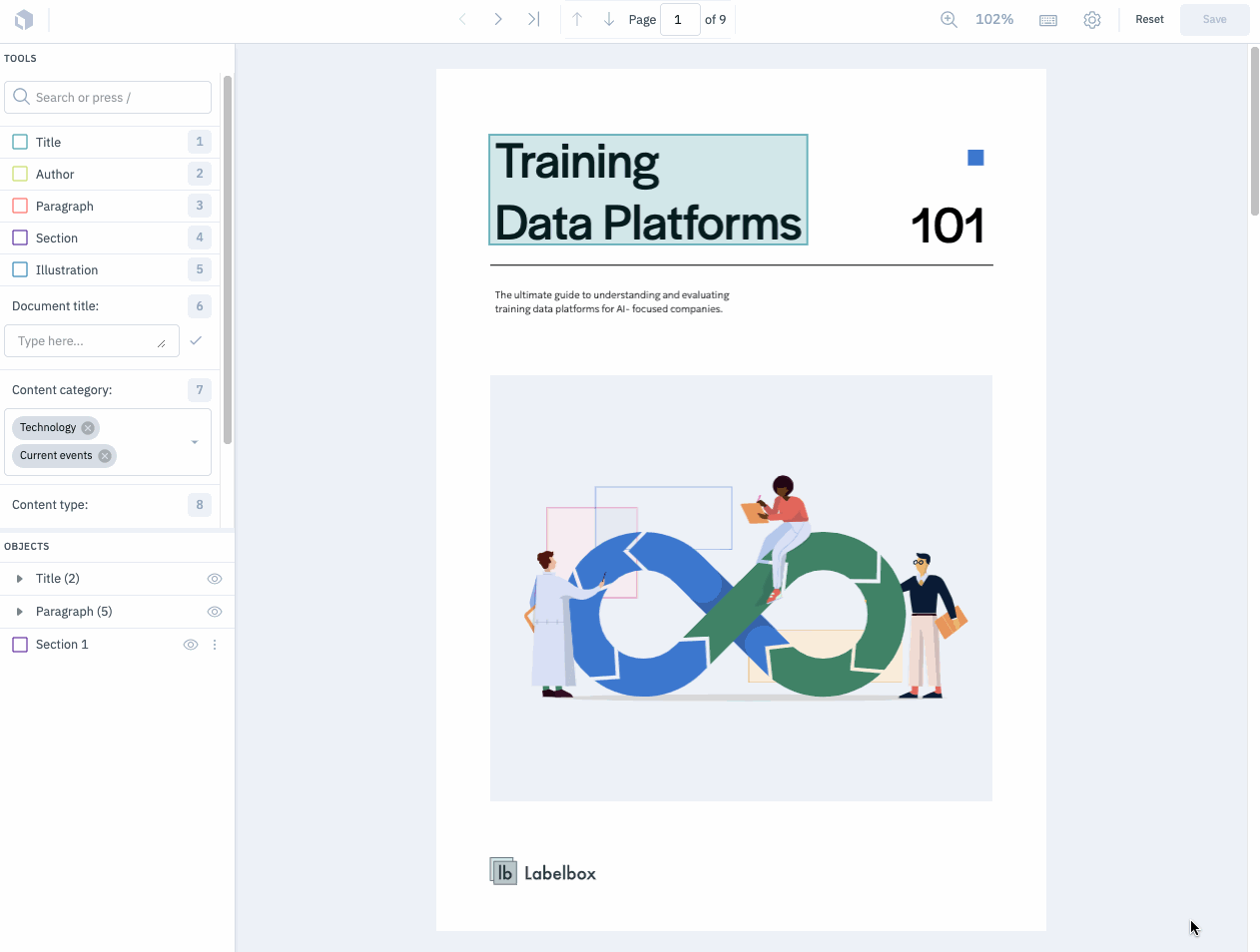
Custom text layers
A unique aspect of our document editor is the ability to view text layers. You can toggle the text layer on and it will appear whenever you want to highlight an entity.
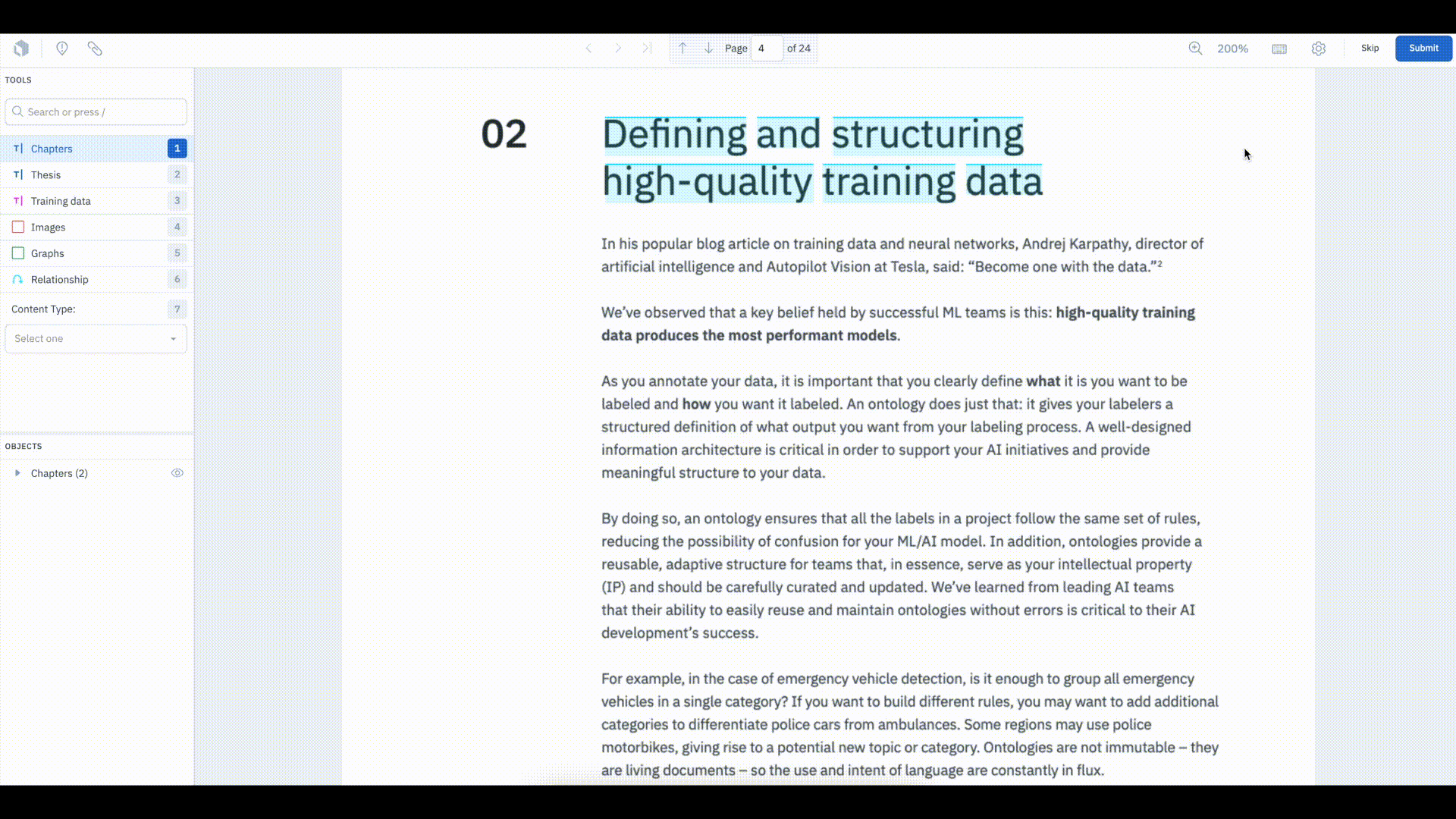
Navigate the document
Use your mouse scroll wheel or trackpad to move forward and backward through the pages of the document. To jump to a specific page, highlight the current page number in the top navigation bar, type your desired page number, and press Enter.
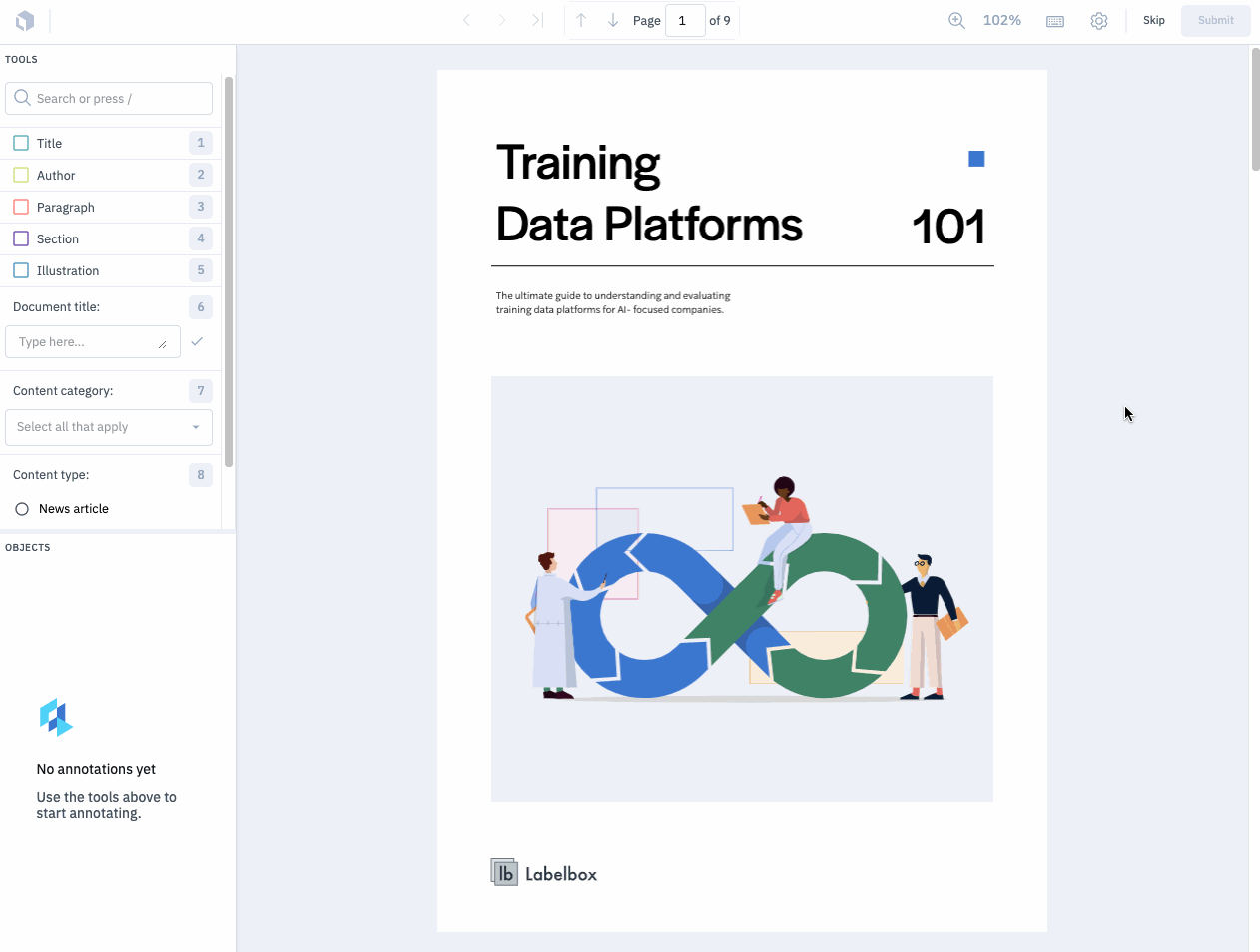
To zoom in, press Z and click on the section of the page you want to zoom in on.
To zoom out, press Opt + Z and click on the page, or press Shift + Z to return the page to its original zoom level.
Document-specific hotkeys
| Function | Hotkey | Description |
|---|---|---|
| Show Text Layer | Shift + T | Show or hide the text layer. |
Updated about 2 months ago